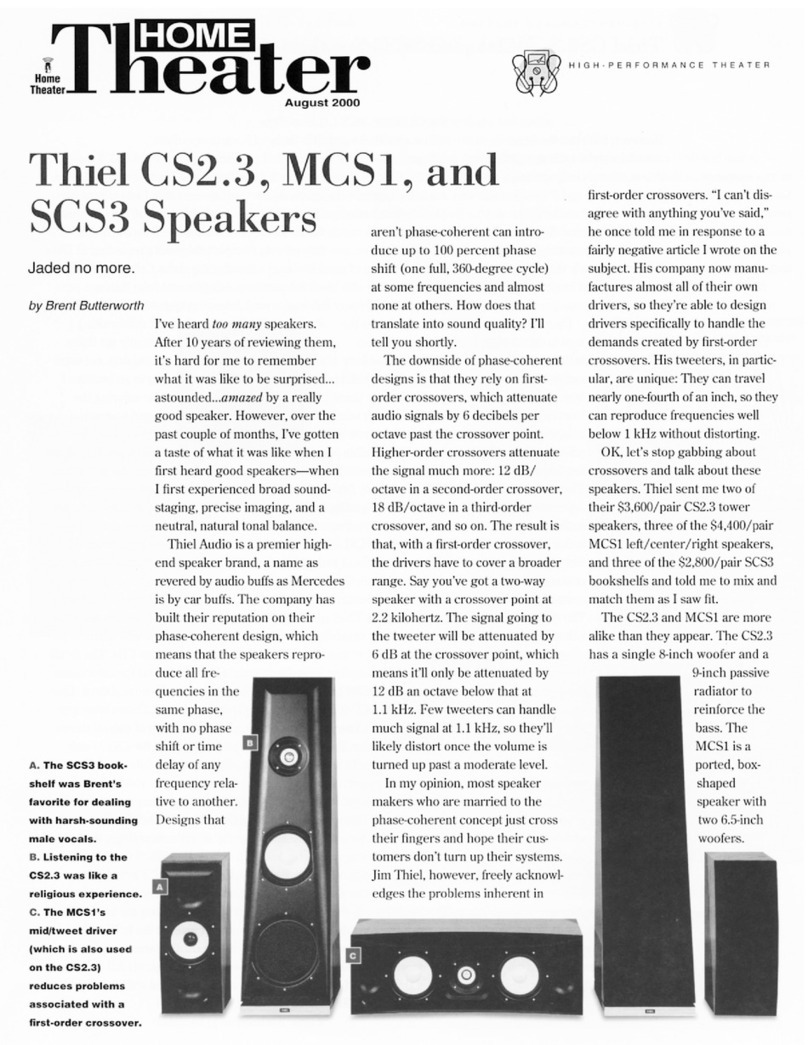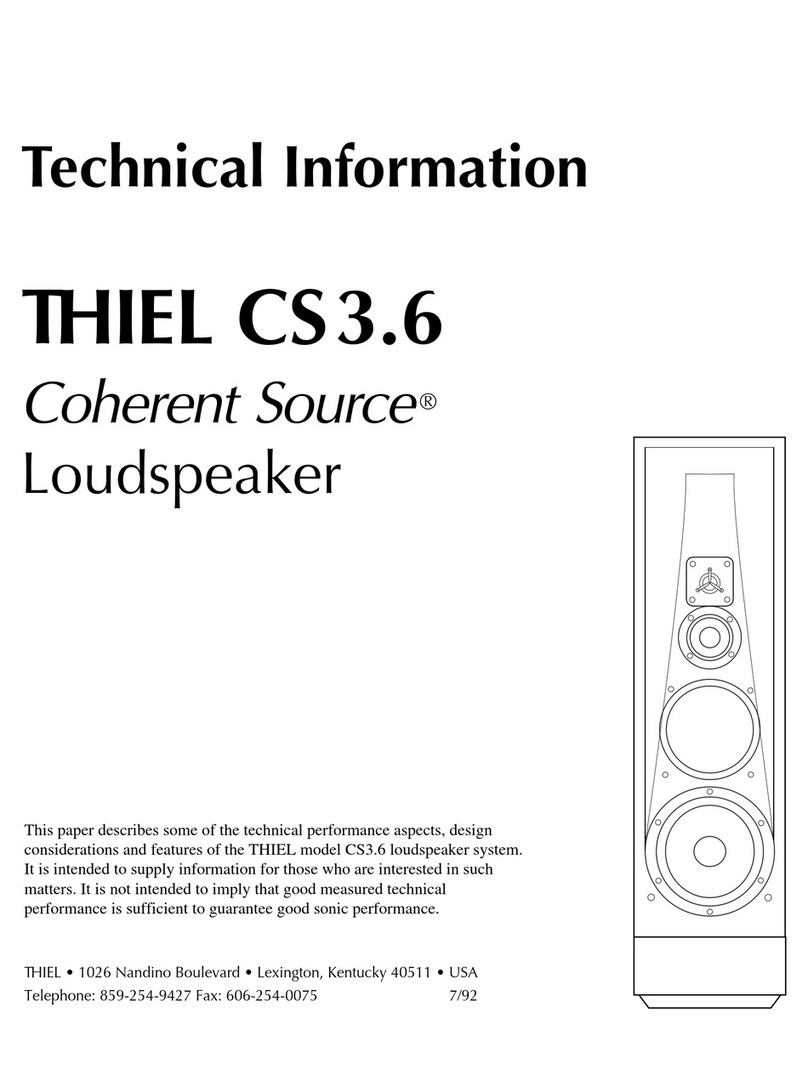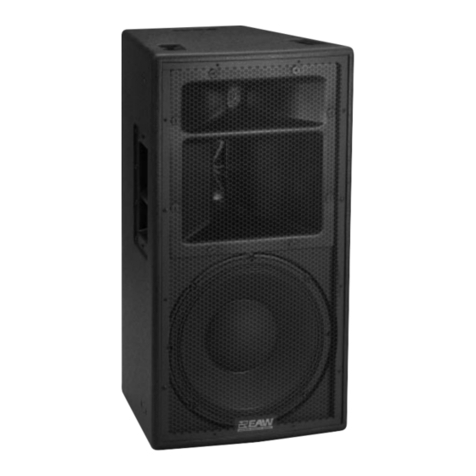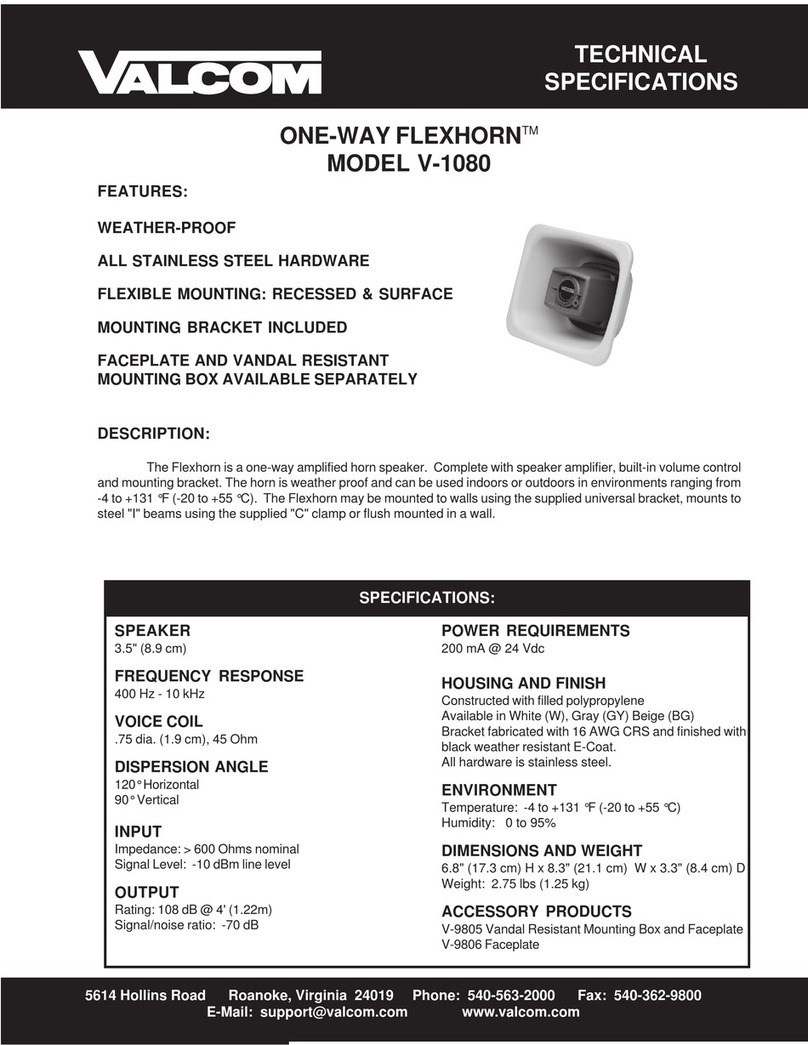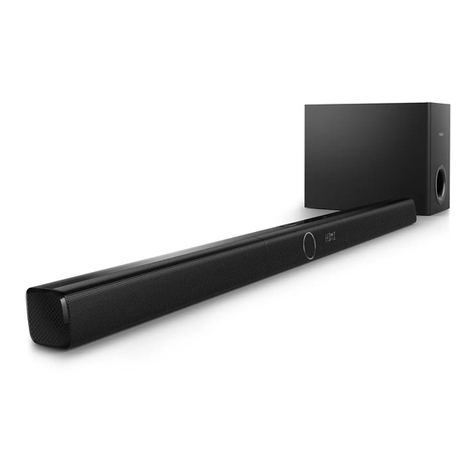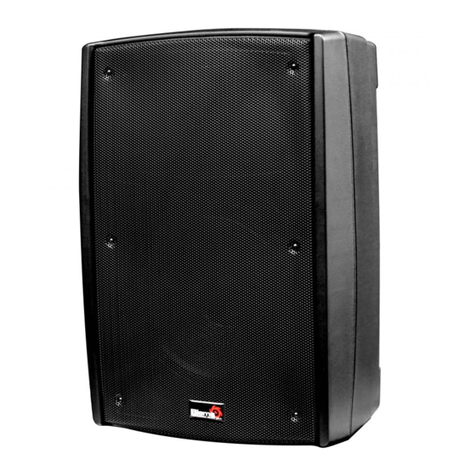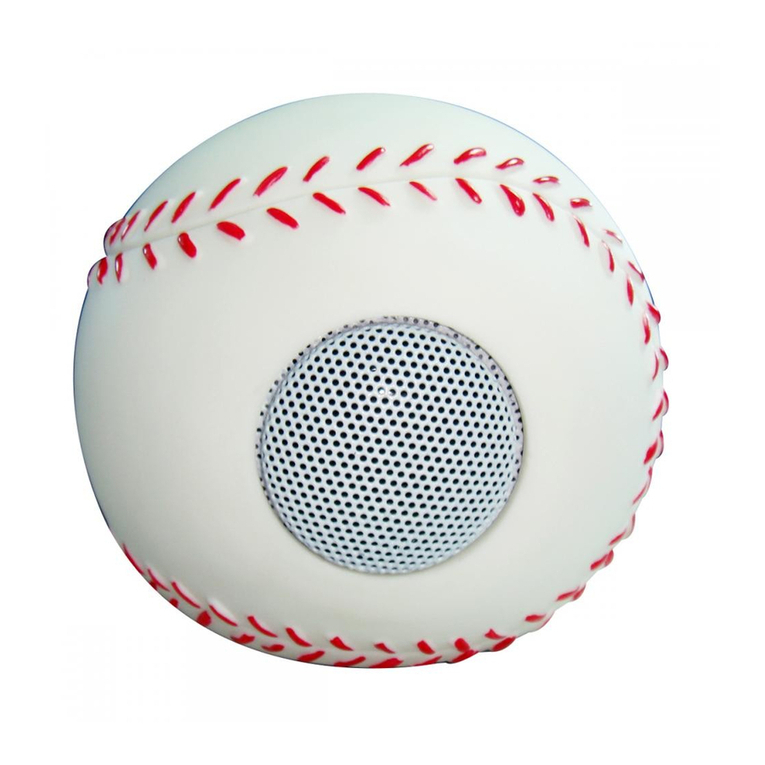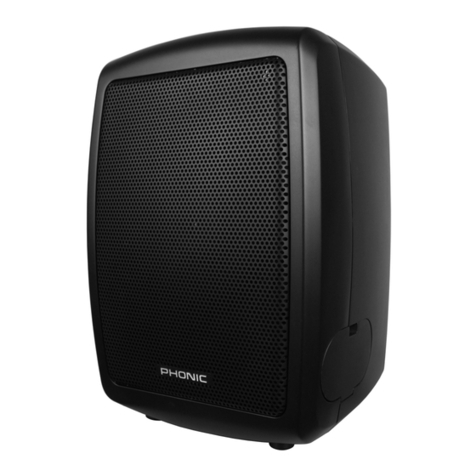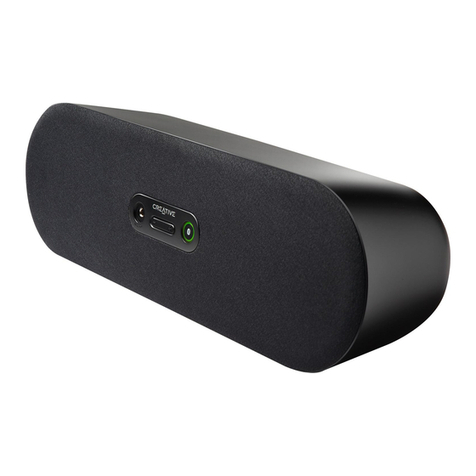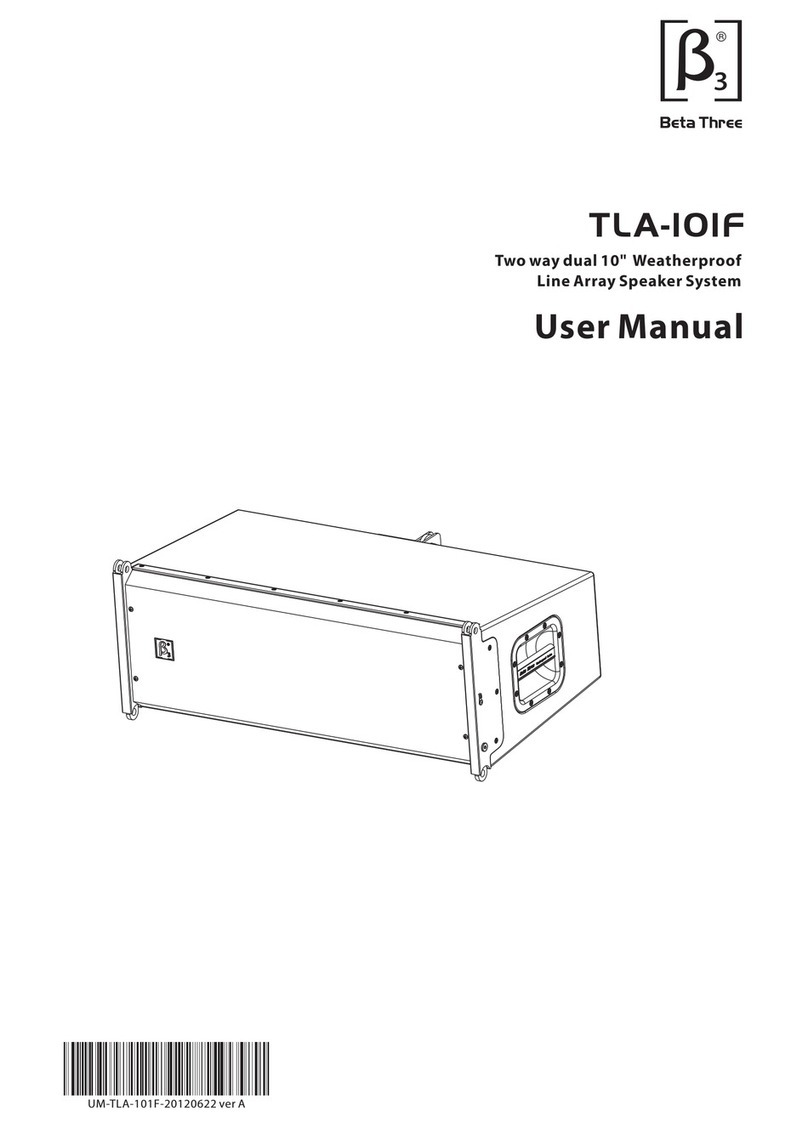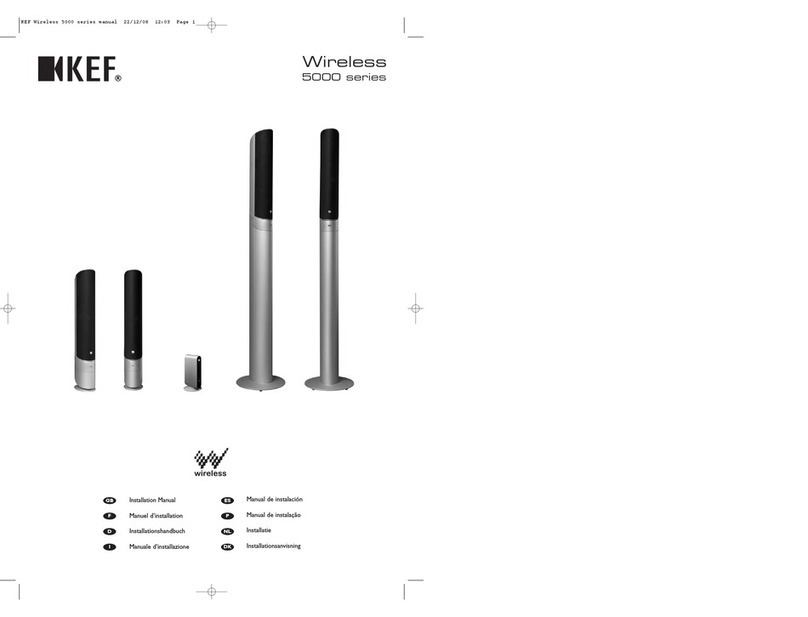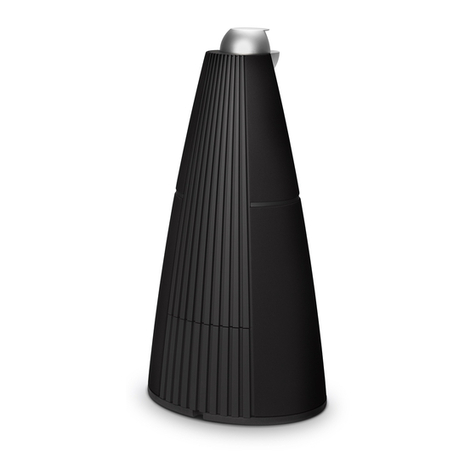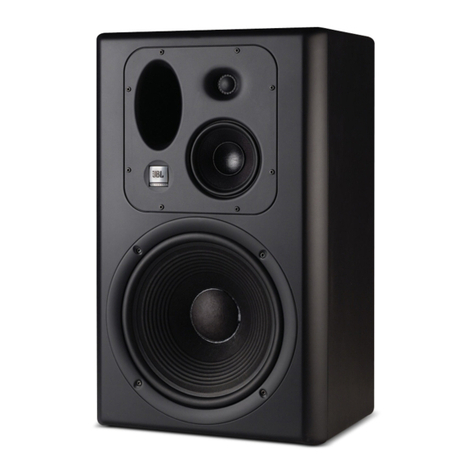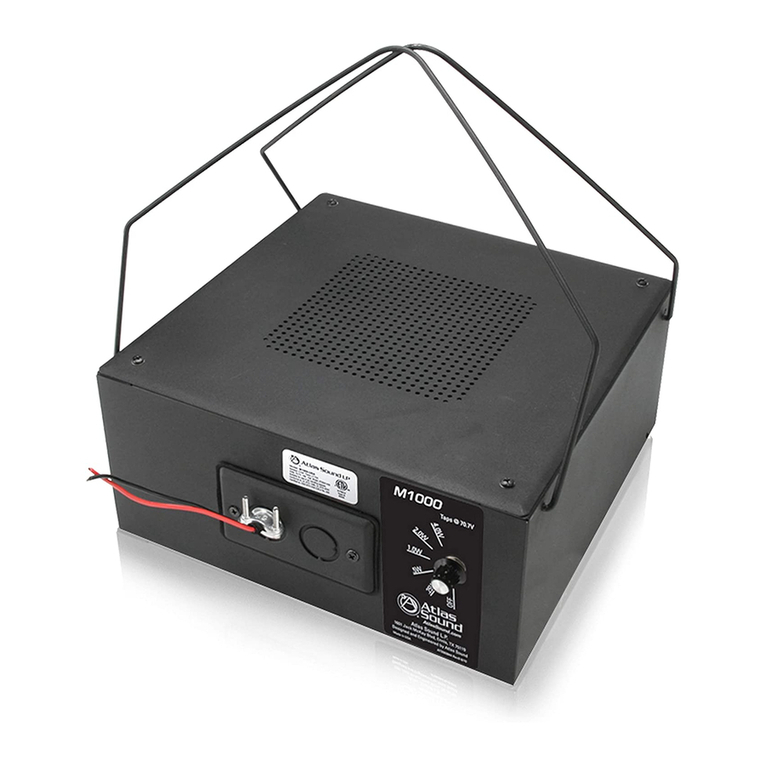Thiel Coherent Source CS3.7 Dimensions


Cabinet
The cabinet plays an enormously important role in the quality
of music reproduction, and so the engineering of the CS3.7’s
cabinet incorporates several innovations that contribute to
the speaker’s stunning clarity, its utter tonal neutrality and its
exceptionally realistic imaging.
The cabinet’s most important function is to completely contain
the energy generated by the drivers to the inside of the cabinet.
If even a miniscule amount of this internal energy escapes
through vibration of the cabinet walls, distorted sound will be
generated that will obscure the music’s delicate details. Cabinet
wall motions of even one ten-thousanths of an inch or less will
produce audible distortion, and so it is very important that all
cabinet walls are as strong and rigid as possible. In this regard
the CS3.7 performs extraordinarily well, with all the cabinet
elements innovatively engineered to provide exceptional
rigidity.
Another task the cabinet must perform is to allow the sound from
the drivers to radiate freely without encountering cabinet edges or
cavities that will diffract some of the energy, causing interference and delayed sounds that produce tonal colorations and obscure
spatial information. In this regard, the CS3.7 provides exceptional results with its gently rounded cabinet top and sides.
Yet another cabinet function is to position all the drivers properly so that the listener hears the sound of each driver at the same
time. The CS3.7’s sloping front is designed to achieve time coherence between the sonic output of the woofer and the midrange/
tweeter array.
And nally, the cabinet should avoid cavity resonances and standing waves in its internal spaces. Here also, the CS3.7 performs
well, with the curvature of its sides and top, along with its angled bafe, presenting virtually no parallel walls.
The speaker’s front bafe is
machined from aluminum, a
material more than 30 times
as strong as the usual MDF. In
addition to reducing unwanted
vibrations, aluminum also
provides a rigid mounting of
the drivers so they cannot move,
even a miniscule amount, in recoil
from the forces they generate to
accelerate the diaphragm (every
force has an equal and opposite
force).
The bafe’s sloping angle positions
the drivers for proper time
coherence. The construction of the cabinet sides also plays its
part in the CS3.7’s rigid, low vibration cabinet.
The sides are made of 15 layers of hardwood
laminated together into a curved shape
under high pressure. This
results in a much stronger
panel than usual, with the
curves adding greatly to
its rigidity. The rounding
at the front of the
speaker also reduces
unwanted diffraction,
and the gentle rounding along the cabinet sides creates
non-parallel walls
to minimize internal resonances.
The cabinet top is made of
die-cast aluminum whose
shape provides several
important advantages.
First, it provides
enormous strength,
virtually eliminating unwanted
vibration. Also, its rounded
shape around the midrange eliminates diffraction of
energy from the midrange and tweeter. In addition, the
rounded shape helps minimize resonances within the
cabinet.
www.thielaudio.com
6
“The world should experience the performance of this exceptional loudspeaker.”
—Matthias Böde, STEREO Magazine, January 2008
Reducing Diffraction
This diagram illustrates how
energy from the tweeter (blue) is
diffracted from cabinet edges and
a nearby driver cavity (red).
Here it is illustrated how the
CS3.7’s rounded bafe edges and
at midrange diaphragm allow
the tweeter’s energy to leave the
cabinet without being diffracted.

The THIEL CS3.7
“In a word: stunning.”—Brett Gideon,
TONE Magazine, New Zealand, January 2008
The cabinet top is made of die cast aluminum into a shape that provides
dramatically improved vibration reduction, the practical elimination of
diffracted driver energy and the reduction of internal standing waves. Less
vibration contributes to greater clarity, while the absence of diffraction allows
for very open, boxless reproduction.
The tweeter is coincidently mounted with the midrange so the two drivers
are perfectly time coherent for every listener position and so every trace of
lobing is vanquished. This driver mounting system ensures that you will always
hear the sound with perfect timing and synchrony, creating a sense of realism
unachievable by any other means.
The midrange driver incorporates a radically new diaphragm geometry that
provides incredible rigidity and achieves perfect pistonic motion to the limits
of audibility. The diaphragm’s at shape also eliminates any altering diffraction
of the tweeter’s output.
The cabinet sides achieve great stiffness by a construction of 15 hardwood
plies formed together into a curved, thick panel. This construction preserves
the nuances and delicacy of the music by reducing unwanted sonic artifacts
that would obscure musical detail.
The cabinet front is sloped to provide time coherence between the woofer
and the mid/tweeter array, preserving music’s timing information. Because all
the discrete harmonics that make up the musical sounds are heard in perfect
synchrony, all the music’s spatial cues are reproduced naturally.
The 3.7’s front bafe is machined from aluminum to provide great rigidity
against unwanted vibration and to provide a very hard and rigid mounting for
the drivers, practically eliminating recoil motions of the drivers. Such a rigid
mounting system retains delicate information lost in most speakers.
The woofer’s diaphragm contributes to extended bandwidth and high
while its very large magnet powers the copper stabilized, long gap motor
that achieves distortion levels only one-tenth the usual. The result is tonal,
effortless, and solid low frequencies.
The sophisticated crossover network provides complete phase coherence of
the musical harmonics so that the music’s waveforms are preserved, while also
providing uniform energy response and exceptionally neutral tonal response.
The result is astonishing clarity, transparency, and true three-dimensional
realism you may not have known was possible.

The Midrange Driver should, of course,
precisely reproduce every musical nuance while introducing
not even a trace of its own colorations or distortions
caused by diaphragm resonances or electromagnetic
nonlinearity. The most exciting innovation in the CS3.7
is a new midrange diaphragm that advances midrange
performance much closer to this ideal.
The midrange driver’s diaphragm is constructed with
an entirely new shape that provides far greater stiffness
than typical diaphragms, even those made from exotic
materials. The diaphragm is shaped with corrugations that
are oriented from the center outward (like spokes) and
act a little like small I-beams to provide enormous strength
in that direction. The large diameter voice coil attached to
the diaphragm gives it strength in the other direction – around
the circle. This design achieves such great stiffness that the diaphragm
continues to vibrate perfectly, as one unit, all the way up to 20 kHz, usually
considered the upper limit of human hearing. Such fabulous vibrational behavior is
unprecedented and allows the CS3.7 to achieve a purity and delicacy of the high frequencies that is truly extraordinary.
This new diaphragm geometry also has a second important benet that derives from its shape. The diaphragm is basically at and
therefore has virtually no detrimental effect on the tweeter’s output, unlike a normal cone shaped diaphragm that alters the sound
of a tweeter mounted in its center.
Anatomy of a midrange driver
The Tweeter provides much lower distortion
and higher output than any other tweeter we are aware
of. This is accomplished in spite of a size small enough to
mount coincidently with the midrange driver by a unique
long gap motor system that uses a set of four radial and one
axial neodymium magnets with a total weight six times that
of a typical neodymium powered tweeter. In addition, the
tweeter provides the complete absence of any coloration-
producing diaphragm resonances in the audible range,
a very wide operating bandwidth and very low power
compression. The result is high frequencies of utter neutrality
and effortless dynamics.
A set of four radially-magnetized and one axially-magnetized
neodymium magnets have a total weight of 2.3 oz. (64 grams),
six times as much as usual neodymium powered tweeters.
CS
3.7
Components
The die-cast chassis
rigidly holds the tweeter
and midrange in perfect
alignment and virtually
eliminates transient-
robbing subtle vibrations
of the motor system.
A copper sleeve around
the center magnetic pole
stabilizes the strength of
the magnetic eld and
reduces the voice coil’s
inductance non-linearity.
An extremely powerful
neodymium magnet
powers a very large and
deep magnetic gap so
the driver can achieve
both very high efciency
and high level, low
distortion output.
The wide magnetic gap,
in conjunction with the
short-winding voice
coil provides much
lower motor distortion
compared with common
short-gap designs.
The very large
diameter voice coil
contributes exceptional
circumferential strength to
the moving system while
providing high power
handling and very low
power compression.
The unique diaphragm
shape provides
unprecedented
stiffness and therefore
unprecedented,
resonance-free operation.
www.thielaudio.com
4

The Crossover is a true
rst order acoustic type that provides
the utmost in spatial and depth imaging
performance as well as overall realism.
This is the only type of crossover that
provides complete accuracy of amplitude,
phase, time, and energy, and therefore
the only type that does not distort the
musical waveform. Proper application of
this gradual-transition type of crossover
requires the use of more expensive
drivers with wider frequency ranges
than are required for use with common
quick-transition crossovers, but the benets also include improved
uniformity of the speaker’s output in all directions.
The crossover is meticulously engineered to achieve extreme tonal
neutrality and is constructed with extensive use of polypropylene
and custom polystyrene capacitors.
This graph shows the ideal response
to a step signal, which like music,
contains harmonics with phase and
time relationships.
This graph shows how the woofer
signal (red) and the tweeter signal
(blue) from the common 4th order
crossover add to produce a distorted
waveform (black).
This graph shows how the woofer
and tweeter signal from a 1st order
crossover combine to reproduce the
waveform of the input signal.
Time
Phase Coherence
The Woofer also utilizes
an innovative diaphragm that is
basically at and therefore reduces
the diffraction of the midrange energy
usually caused by the woofer’s conical
cavity. The massive magnet powers a
very high output and low distortion
long magnetic gap, and distortion
is further reduced by the use of a
heavy copper pole ring and a copper
pole sleeve that reduces inductance
nonlinearity. The large 3 inch diameter
voice coil allows high power handling.
The very low frequencies are
augmented by a passive bass radiator
diaphragm which avoids the resonance
and noise problems of a ported
enclosure.
New geometry
diaphragm reduces
cavity diffraction and
extends bandwidth
Heavy die-cast
chassis
Thick copper pole ring stabilizes
the magnetic strength against
high power input to maintain
proper transient impact
Copper pole sleeve
reduces inductance
nonlinearity to
maintain purity
Very long,
magnetic gap
provides the
coil with a
large region
of uniform
magnet eld
Very large 5 lb. magnet
used to power the long
magnetic gap while
providing optimum
bass control
Large diameter, six layer
voice coil is much shorter
than the magnetic gap
so that it experiences
constant magnetic strength
during large excursions
Reducing Distortion
Most speaker distortion is produced because the voice coil
experiences changes in the magnetic strength as it moves forward
and back to produce sound — changes that are caused because the
ends of the coil become farther from the magnetic gap where the
magnetic eld is strongest.
By contrast, in the THIEL long gap system, all of the short coil
is always within the long magnetic gap, and therefore the coil
does not experience changes in magnetic strength as it moves.
Because the magnetic eld is constant throughout the coil’s motion,
distortion is greatly reduced. These long gap/ short coil, copper
stabilized systems do require much larger magnets, but they
produce less than one-tenth the distortion of conventional drivers.
In addition, all THIEL drivers use a copper sleeve around the central
magnetic pole that reduces inductance distortion and the woofers
also use a thick copper ring that stabilizes the strength of the
magnetic eld during long, high power excursions. These distortion
reducing methods result in noticeably greater purity of sound and
result in more effortless dynamic reproduction.
In a conventional magnet system, the coil
(red) is longer than the magnetic gap (yellow)
and therefore enters a weaker eld (green)
whenever it travels from its rest position. This
changing eld strength produces distortion.
In THIEL’s long gap design, the shorter coil remains within
a long uniform eld as it moves through its entire range,
drastically lowering distortion.
magnet
copper sleeve
copper ring
Excursion
10%
8 mm
Distortion
8 mm
10%
Excursion
Distortion
www.thielaudio.com 5
“The speaker literally ‘melts’ into the soundstage. You are never aware that the sound is coming
from two boxes in front of you . . .” —James Tanner, Bryston Electronics

Profound beauty and subtle emotions can easily be evoked by
a great performance of great music. At THIEL, our passion is to
provide this experience for our customers and, therefore, our
standard of speaker quality is delity to the music – a complete
and perfectly accurate translation of the musical signal. This
is what motivates me – to develop loudspeakers that preserve
precise sound character, provide resolution of the most subtle
musical details, reproduce an accurate three-dimensional
representation of the performance, and provide a realistic
recreation of the dynamic contrasts in music.
Achieving this level of performance is made more challenging
because, while some aspects of speaker performance can be
measured and described by specications, other important
aspects cannot, and achieving the highest level of performance in
these respects is often even more difcult. In other words, while
great specications are necessary for great performance, they are
not sufcient – there is much more to music and its reproduction
than can be captured by a few numbers.
For the CS3.7, my goal was to achieve a level of performance
greater than any previous product by incorporating everything
we have learned and every innovation we have developed over
the last 30 years, and then adding some exciting new ideas to
overcome limitations of previous designs.
I hope you nd the CS3.7 speakers as rewarding to listen to as
they have been for me to develop.
The enjoyment of music is a uniquely rewarding and
inspiring human experience.

Performance Summary
The CS3.7 achieves the following major performance
attributes:
• Extremely accurate tonal response achieved by exceptionally
accurate frequency response, very low diffraction, and
elimination of signicant resonances. Octave-averaged
response is within ±0.5 dB.
• Very high resolution of detail achieved by drastic reduction
of audible diaphragm resonances, very non-resonant,
sonically inert cabinet, time coherence, extensive use
of premium quality polystyrene and polypropylene
crossover capacitors and numerous other details of design,
engineering, and construction.
• Truly realistic and natural imaging provided by complete
elimination of phase distortion (true minimum phase
response), time coherence, exceptionally wide and even
dispersion of energy at all frequencies enhanced by rst-
order crossover system, low diffraction, and very low levels
of delayed resonant energy.
• Preservation of dynamic contrasts achieved by very low
driver distortion, high efciency, very low delayed energy
storage, and very low power and thermal compression.
Specications
Driver complement:
Tweeter: 1 in. (2.5 cm) aluminum dome, 64 g (2.3 oz.)
neodymium magnets, copper pole sleeve, short
coil/ log gap design with 3 mm Xmax, coincidently
mounted with midrange
Midrange: 4.5 in. (11.5 cm) with wave-shaped aluminum
diaphragm, 3 in. diameter voice coil, 115 g (4 oz.)
neodymium magnet, copper pole sleeve, short coil/
long gap design with 6 mm Xmax, die-cast chassis
Woofer: 10 in. (25.4 cm) with wave-shaped aluminum
diaphragm, 3 in. diameter voice coil, 5 lb. (2.27 kg)
magnet in a 13 lb. (5.9 kg.) structure, copper pole
ring, copper pole sleeve, short coil/ long gap design
with 14 mm Xmax, die-cast chassis
Passive Bass Diaphragm: 10 in. (25,4 cm) wave-shaped
diaphragm
Bandwidth (-3 dB). . . . . . . . . . . . . . . . . . . . . . . . . . . . . . . . 32 Hz - 35 kHz
Frequency response . . . . . . . . . . . . . . . . . . . . . . 33 Hz - 26 kHz ±2 dB
Phase response . . . . . . . . . . . . . . . . . . . . . . . . . . . . . . . . . . . minimum ± 10°
Sensitivity (2.8v - 1m, true anechoic). . . . . . . . . . . . . . . . . . . . . 90 dB
Impedance . . . . . . . . . . . . . . . . . . . . . . . . . . . . . . . . . . 4 ohm (2.8 ohm min)
Recommended power . . . . . . . . . . . . . . . . . . . . . . . . . . . . 100 - 600 watts
Size (w x d x h) . . . . . . . . . . . . . . . . . . . . . . . . . . . . . 12.5 x 21 x 45 inches
(32 x 53 x 114 cm)
Weight . . . . . . . . . . . . . . . . . . . . . . . . . . . . . . . . . . . . . . . . . . . . . . 91 lb (41.5 kg)
The blue graph is the on-axis anechoic frequency response.
The green graph is the octave-averaged on-axis response. This
correlates with perceived tonal balance.
The red graph is the octave-averaged 30° off-axis response. This
correlates with the room’s ambient energy.
10K
Frequency
1K
25
20
15
10
5
0
-5
-10
10020 20K
Amplitude — dB
44.9” / 114 cm
12.6” / 32 cm 18.9” / 48 cm
21.3” / 54 cm
www.thielaudio.com
THIEL CS3.7 in Morado nish with optional Outriggers.
7

rev0608

Other manuals for Coherent Source CS3.7
6
Table of contents
Other Thiel Speakers manuals
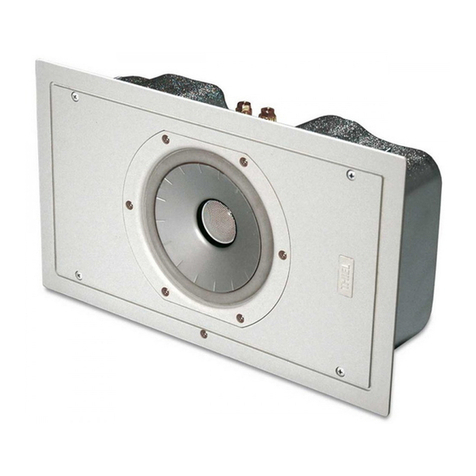
Thiel
Thiel 1.2 Coherent Technical manual
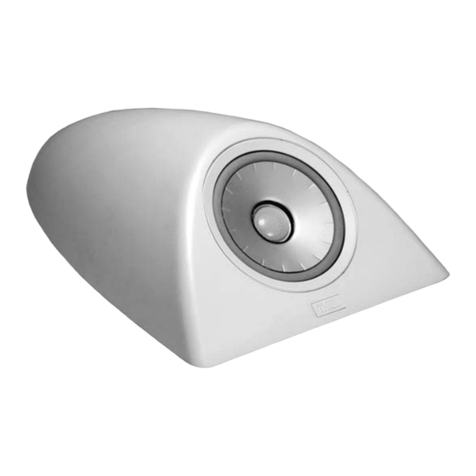
Thiel
Thiel PowerPoint 1.2 Dimensions
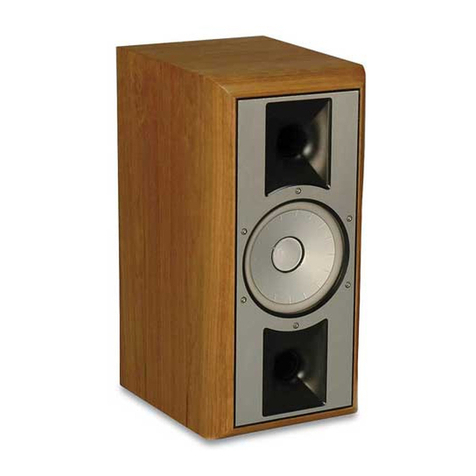
Thiel
Thiel Coherent Source SCS4 User manual
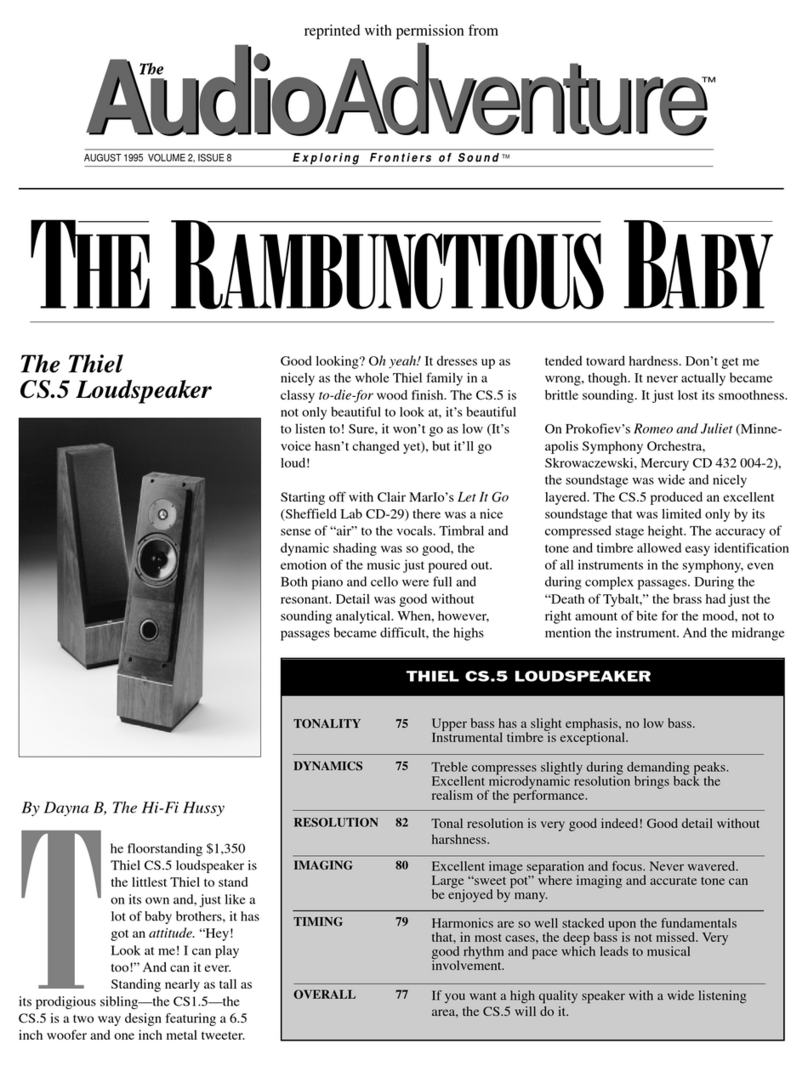
Thiel
Thiel CS.5 Dimensions
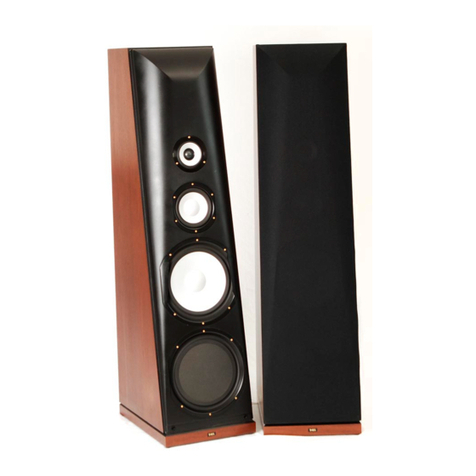
Thiel
Thiel CS6 User manual

Thiel
Thiel PowerPoint 1.2 User manual
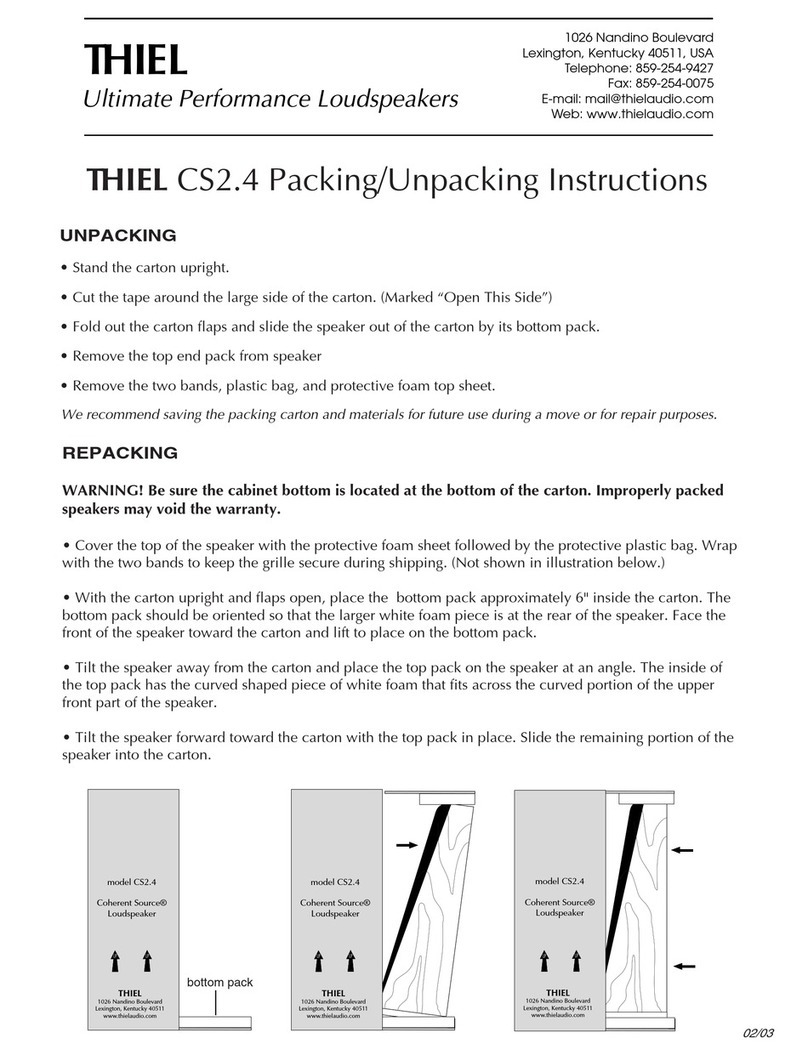
Thiel
Thiel CS2.4 User manual
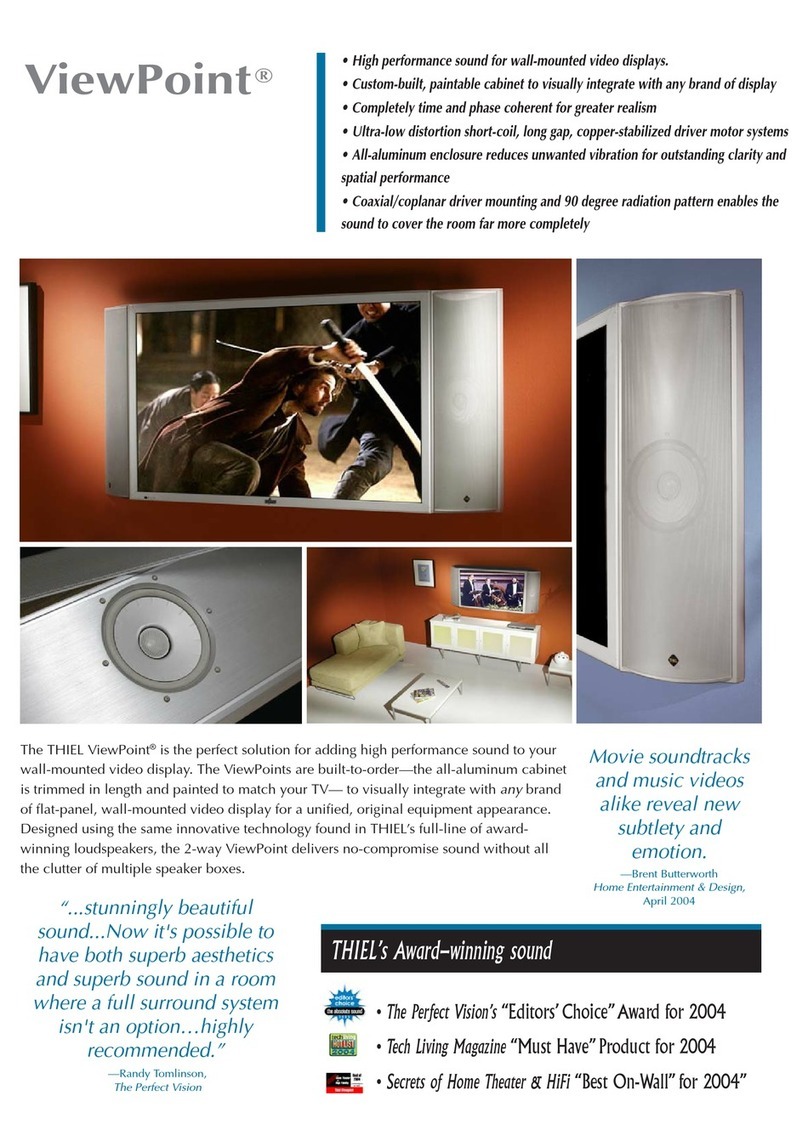
Thiel
Thiel ViewPoint User manual

Thiel
Thiel CS 7.2 Manual

Thiel
Thiel CS6 User manual
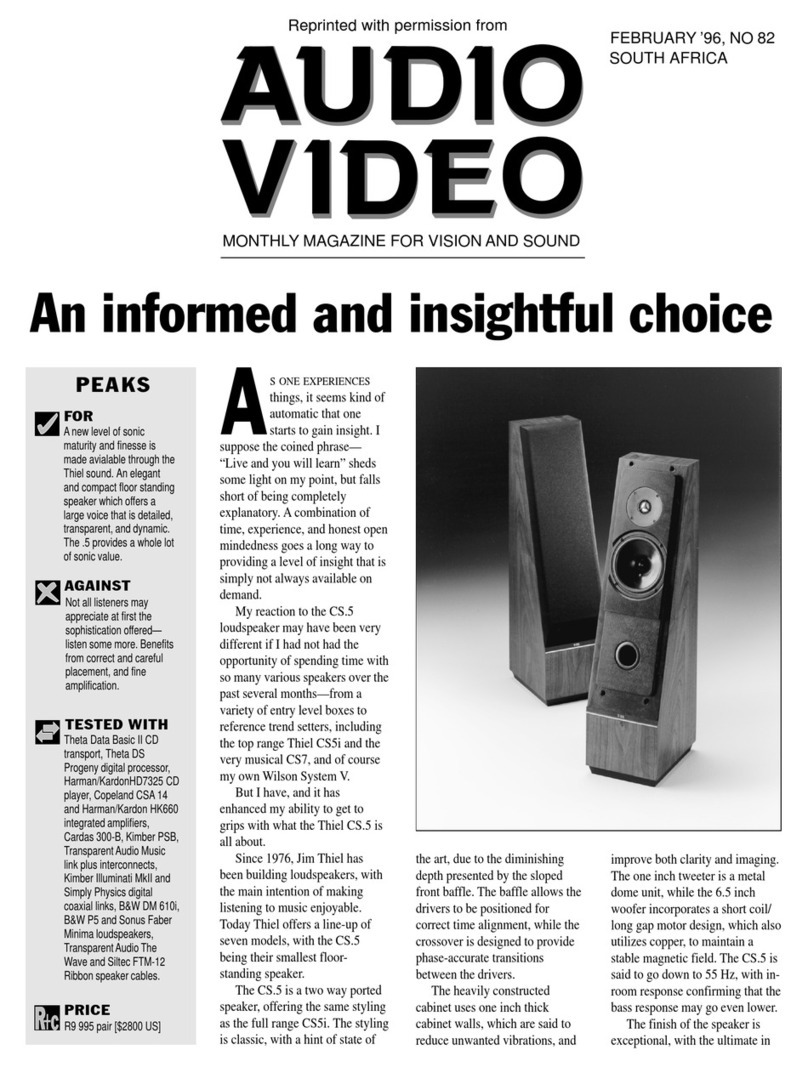
Thiel
Thiel CS.5 Dimensions

Thiel
Thiel SCS4T Technical manual
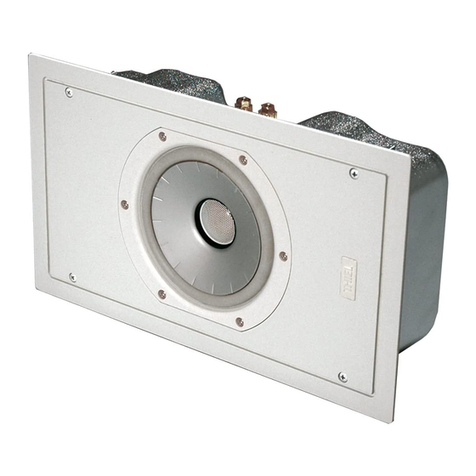
Thiel
Thiel PowerPlane 1.2 User manual
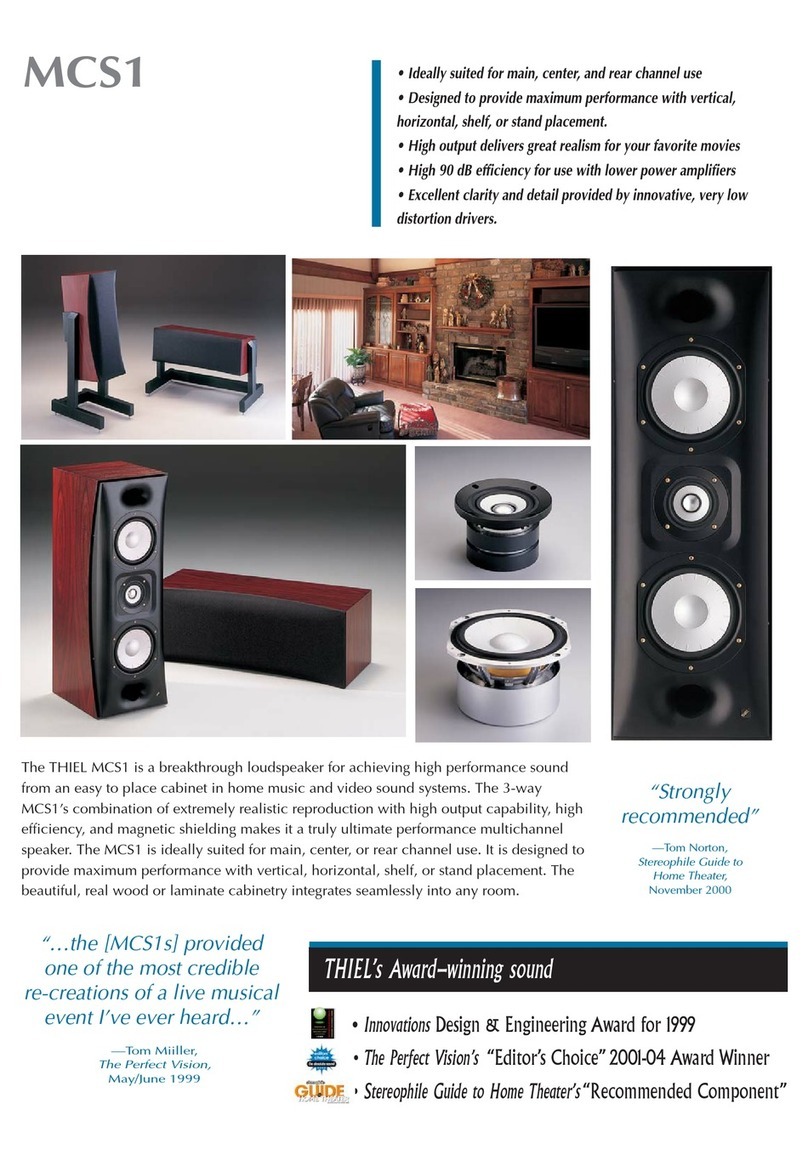
Thiel
Thiel MCS1 User manual
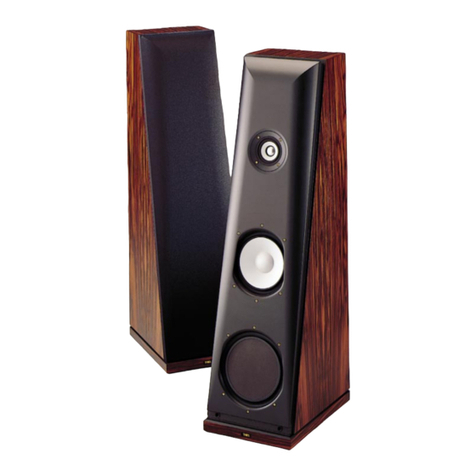
Thiel
Thiel CS2.3 User manual

Thiel
Thiel SCS3 User manual
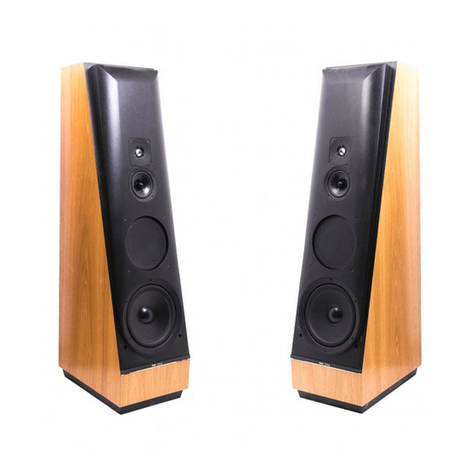
Thiel
Thiel CS3.6 User manual

Thiel
Thiel Coherent Source CS2.7 User manual

Thiel
Thiel CS3.6 User manual

Thiel
Thiel CS.5 User manual

